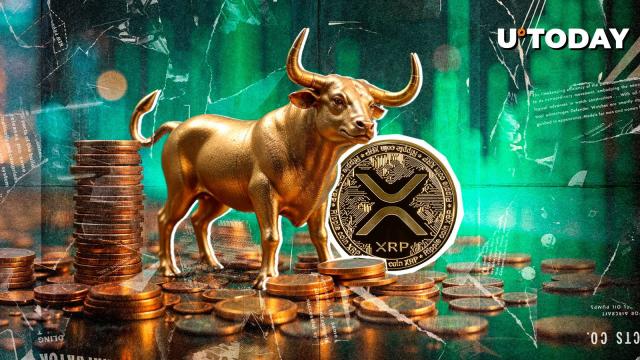I want to write down some content that I have been repeatedly thinking about, which is how Bitcoin might perform when experiencing a major capital flow pattern change that it has never experienced since its birth. I believe that once the deleveraging process ends, Bitcoin will usher in an excellent trading opportunity. In this article, I will elaborate on my thoughts.
What are the key driving factors of Bitcoin's price?
I will draw on Michael Howell's research on the historical driving factors of Bitcoin's price trend, and then use these findings to further understand how intertwined factors might evolve in the near future.
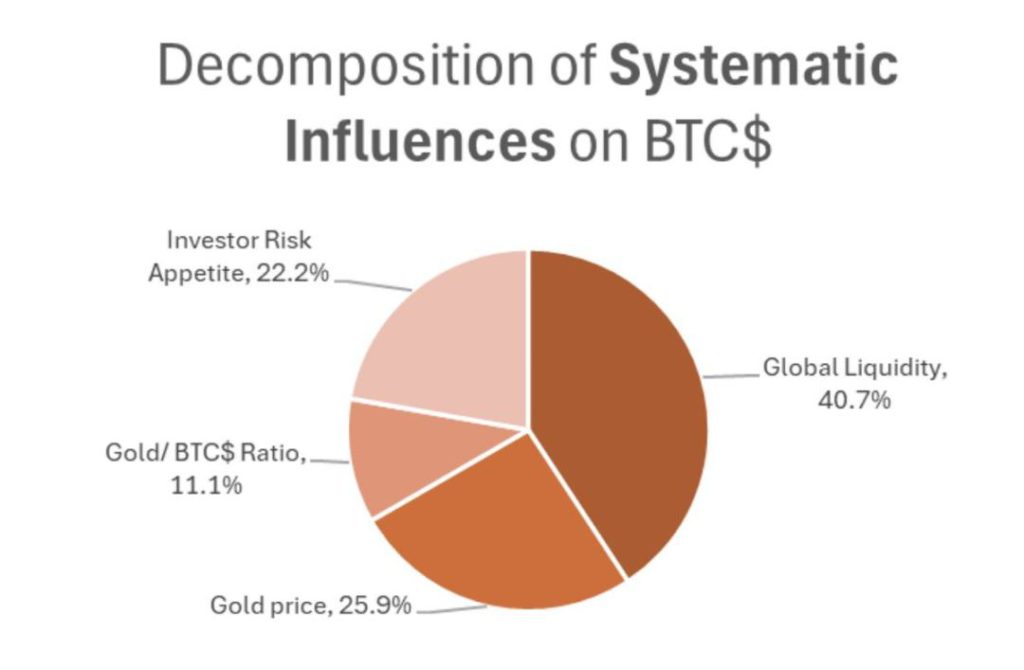
As shown in the chart above, Bitcoin's price is driven by these factors:
- Investors' overall preference for high-risk, high-beta assets
- Bitcoin's correlation with gold
- Global liquidity
Since 2021, I understand the simple framework of risk preference, gold performance, and global liquidity as using the proportion of fiscal deficit to GDP as a quick observation indicator to gain insight into the fiscal stimulus factors that have dominated global markets since 2021.
Mechanically, a higher fiscal deficit to GDP ratio leads to increased inflation, rising nominal GDP, and thus for businesses, their revenue will also increase as income is a nominal indicator. For businesses that can enjoy economies of scale, this is favorable for their profit growth.
To a large extent, monetary policy has been secondary to fiscal stimulus, and fiscal stimulus has been the primary driver of risk asset activity. As shown in the chart frequently updated by George Robertson, US monetary stimulus has been very weak compared to fiscal stimulus, so in this discussion, I will temporarily set aside monetary stimulus factors.
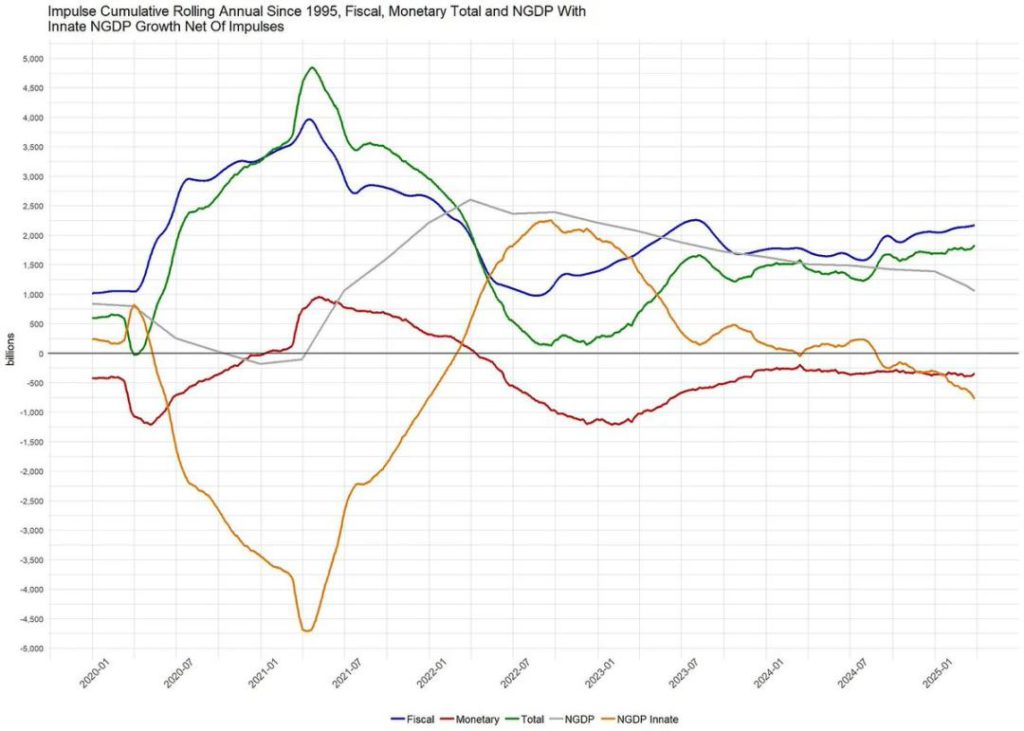
From the chart of major Western developed economies below, we can see that the US fiscal deficit to GDP ratio is far higher than other countries.

Due to such a massive fiscal deficit in the US, revenue growth dominates, making the US stock market perform better relative to other economies:
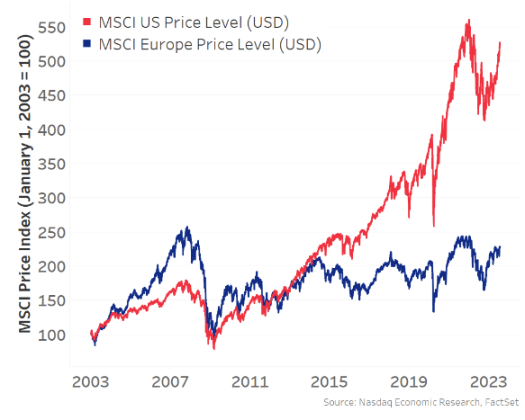
The US stock market has been the primary marginal driver of risk asset growth, wealth effect, and global liquidity, and thus has become a gathering place for global capital, because in the US, capital is treated best. Due to this dynamic of capital inflow to the US, coupled with a massive trade deficit, this leads the US to exchange commodities for foreign-held US dollar forex, which foreign countries then reinvest in US dollar-denominated assets (such as US Treasury bonds and "Seven Giants" tech stocks), making the US the primary driver of global risk appetite:
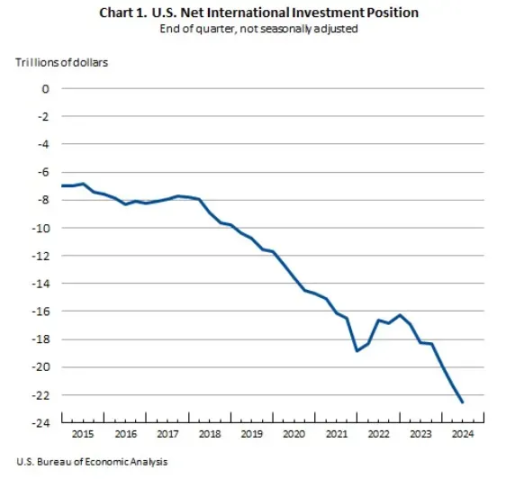
- The Trump administration hopes to reduce trade deficits with other countries. Mechanically, this means that fewer US dollars will flow to foreign countries, which would have been reinvested in US assets. If this situation is to be avoided, trade deficits cannot be reduced.
- The Trump administration believes foreign currencies are artificially suppressed and the US dollar is artificially overvalued, hoping to rebalance this situation. In short, a weaker dollar and stronger foreign currencies will lead to higher interest rates in other countries, thereby encouraging capital to flow back to their home countries to obtain these interest rate returns, which will be more attractive from a foreign exchange adjustment perspective, and also promote the development of their domestic stock markets.
- Trump's "shoot first, ask questions later" approach in trade negotiations is forcing other countries in the world to break free from their relatively small fiscal deficits relative to the US and invest in national defense, infrastructure, and protectionist government investments to increase their self-sustainability. Regardless of whether tariff negotiations ease (such as with China), I believe the "genie is already out of the bottle," and countries will continue these efforts without easily turning back.
- Trump wants other countries to increase their defense spending as a percentage of GDP, as the US bears a large portion of these costs. This will also increase fiscal deficits.
I will set aside my personal views on these points, as many have already commented, and simply focus on the potential impacts if these perspectives logically develop:
- Capital will leave US dollar-denominated assets and flow back to home countries. This means US stock market performance will lag behind other regions, bond yields will rise, and the US dollar will depreciate.
- The countries to which these funds return will no longer be constrained by fiscal deficits, and other economies will begin massive spending and money printing to fill their growing fiscal deficits.
- As the US continues to transform from a global capital partner to a protectionist role, US asset holders will have to raise risk premiums associated with these previously considered high-quality assets and must set wider safety margins. When this occurs, it will lead to rising bond yields, and foreign central banks will be interested in diversifying their balance sheets, no longer relying solely on US Treasury bonds, but turning to other neutral assets like gold. Similarly, foreign sovereign wealth funds and retirement funds may also make such portfolio diversification adjustments.
- The contrary view is that the US is the center of innovation and technology-driven growth, and no country can replace this position. Europe's bureaucracy and socialist tendencies are too strong to develop capitalism like the US. I understand this perspective, which may mean this is not a trend that will continue for years, but more likely a medium-term trend.
Returning to the title of this article, the first round of trading is selling overweighted global US dollar assets and avoiding the ongoing deleveraging process. Since global asset allocation is severely overweight, the deleveraging process may become messy when large fund managers and more speculative participants like multi-strategy hedge funds with strict stop-loss settings reach their risk limits. When this happens, days similar to margin call notices will occur, with massive assets needing to be sold to raise cash. Currently, the key is to survive this process and maintain sufficient cash reserves.
However, as the deleveraging process stabilizes, the next round of trading begins. Diversifying portfolios to include foreign stocks, foreign bonds, gold, commodities, and even Bitcoin.
During market rotations and days without margin call notices, we have already begun to see this dynamic gradually forming. The US Dollar Index (DXY) is falling, US stock market performance lags behind other global markets, gold prices are soaring, and Bitcoin is surprisingly resilient relative to traditional US tech stocks.
I believe that as this occurs, the marginal growth of global liquidity will shift to a state completely opposite to what we have been accustomed to. Other regions of the world will take the lead in increasing global liquidity and risk appetite.
When I consider the risks of such diversification investments in the context of global trade wars, I worry that deep investment in other countries' risk assets might bring tail risks due to potential negative headlines about tariffs that could impact these assets. Therefore, during this transition, gold and Bitcoin become my preferred choices for global diversification investments.
Gold is currently performing extremely strongly, creating new historical highs daily. However, despite Bitcoin's surprisingly resilient performance throughout this landscape shift, its beta correlation with risk appetite has so far limited its gains, unable to match gold's excellent performance.
So, as we move towards global capital rebalancing, I believe the next trading opportunity after this round will be in Bitcoin.
When I compare this framework with Howell's correlation research, I find they are mutually compatible:
- The US stock market will not be influenced by global liquidity, only by liquidity measured through fiscal stimulus and some capital inflows. However, Bitcoin is a global asset that reflects the broader global liquidity situation.
- As this perspective gradually gains recognition and risk allocators continue rebalancing, I believe risk appetite will be driven by other regions of the world, not the US.
- Gold's performance could not be better, and Bitcoin has partial correlation with gold, which also meets our expectations.
Considering all these factors, for the first time in my life, I see the possibility of Bitcoin decoupling from US tech stocks. I know this is a high-risk idea and often marks a regional high point for Bitcoin prices. But different this time is that these capital flows might undergo significant and lasting changes.
So, for a risk-seeking macro trader like myself, Bitcoin feels like the most worthwhile trade after this round. You cannot impose tariffs on Bitcoin, it doesn't care which country's borders it's within, it provides high beta returns for portfolios, and has no tail risks associated with US tech stocks. I don't need to judge whether the EU can solve its own problems, and it provides a position on global liquidity, not just US liquidity.
This market landscape is precisely the opportunity for Bitcoin. Once the deleveraging dust settles, it will be the first to take off and accelerate forward.






